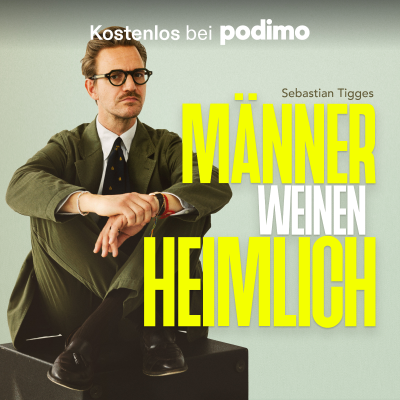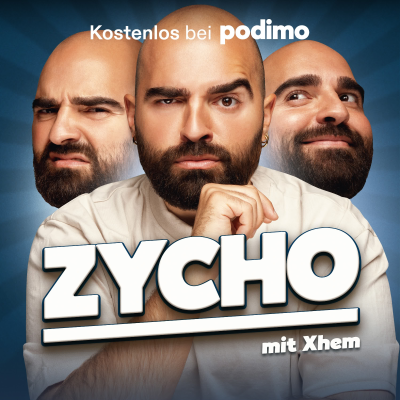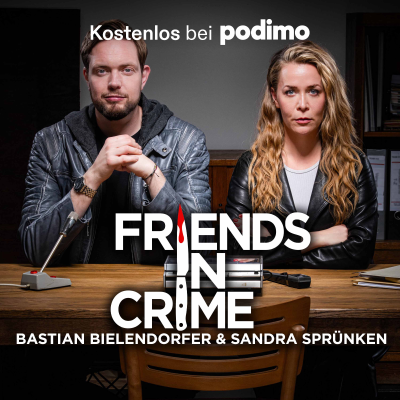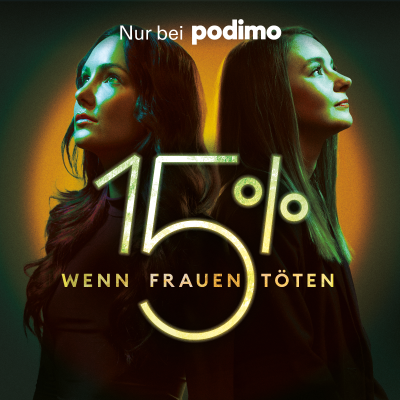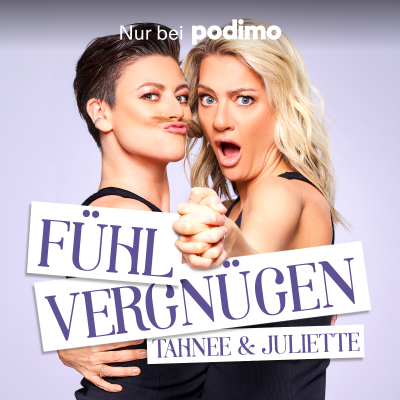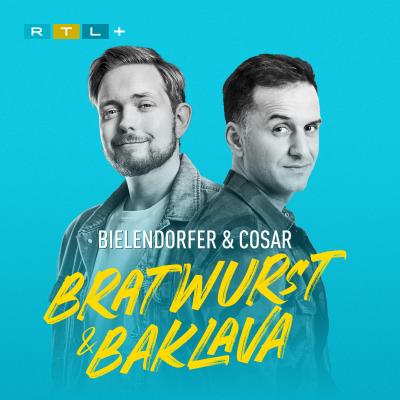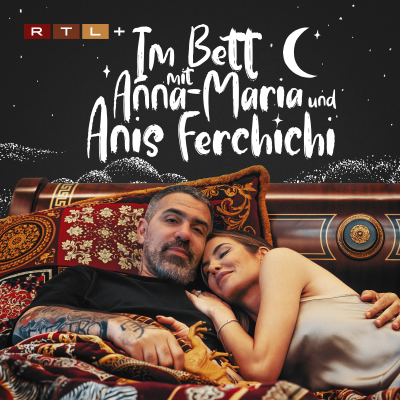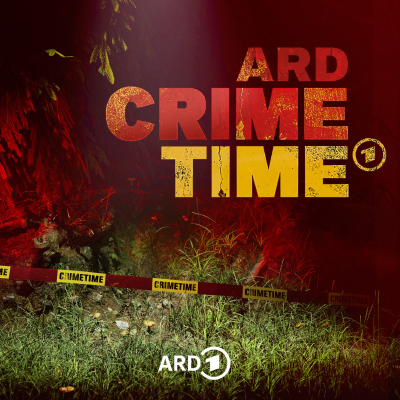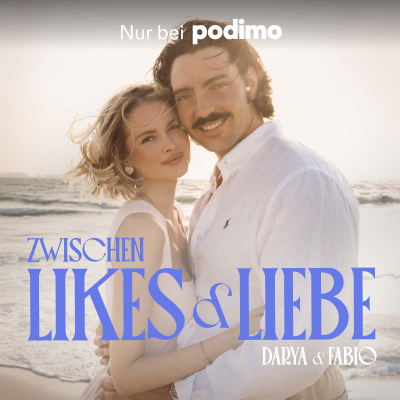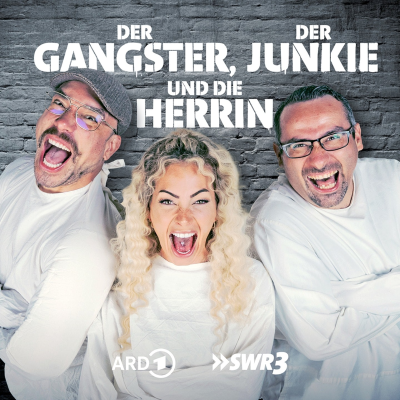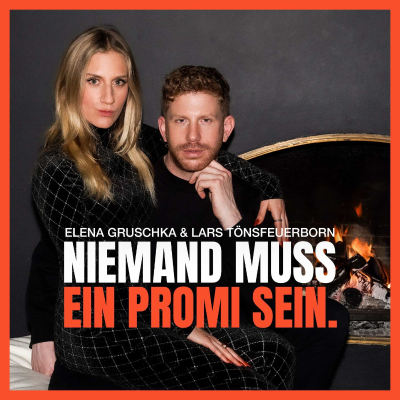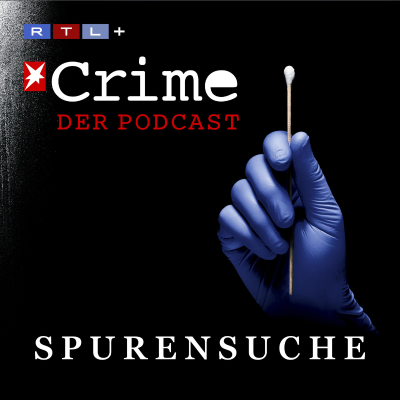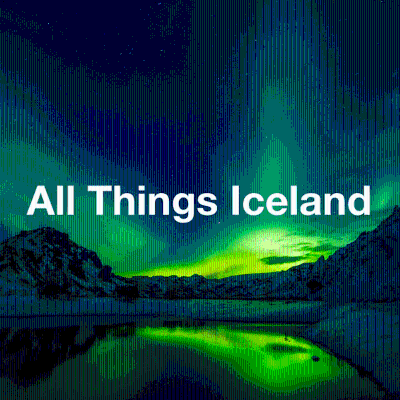
All Things Iceland
Podcast von Jewells Chambers
Nimm diesen Podcast mit
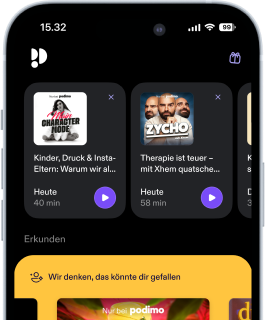
Mehr als 1 Million Hörer*innen
Du wirst Podimo lieben und damit bist du nicht allein
Mit 4,7 Sternen im App Store bewertet
Alle Folgen
347 FolgenI recently stayed at Harmony Lodge [https://harmonyretreatlodge.com/], and let me tell you… it blew me away. If the idea of relaxing in a private sauna and hot tub, surrounded by Icelandic nature — and away from the tourist crowds — sounds like a dream, then keep listening. I’ll also be sharing an exclusive discount you can use to save up to 25% on your own stay at Harmony Lodge. MY STAY AT HARMONY LODGE: Harmony Lodge - All Things Iceland [http://allthingsiceland.com/wp-content/uploads/2025/07/3-1024x576.jpg] Nestled in the serene South Icelandic countryside, this incredible place is just 10 minutes from Seljalandsfoss, one of the most famous waterfalls in the country. Despite being so close to big attractions, it feels completely remote. You won’t hear cars. You won’t see crowds. You’re just surrounded by open land, mossy hills, and stunning views. Each lodge is built with floor-to-ceiling glass walls, giving you panoramic views of the landscape. From the moment I stepped inside, I felt like I had entered a warm, cozy bubble where I could completely unwind. The design is minimal yet luxurious — Scandinavian style with Icelandic charm. And get this — every lodge comes with its own private sauna and hot tub. I honestly don’t think I’ve ever felt so relaxed after a day of exploring. Sitting in the hot tub at sunset with the fresh Icelandic air around me and the quiet of nature all around… It’s the kind of peaceful you can’t describe — you have to experience it. PERFECT BASE FOR EXPLORING THE SOUTH COAST: [http://allthingsiceland.com/wp-content/uploads/2025/07/2-1024x576.jpg] Another thing I loved is how Harmony Lodge strikes the perfect balance: peaceful seclusion, but super close to the major sites. From the lodge, you’re: * 10 minutes from Seljalandsfoss * 30 minutes from Skógafoss * Just over an hour from Reynisfjara Black Sand Beach * Close to Þórsmörk, Eyjafjallajökull, and many more iconic stops. You can easily explore during the day, then come back to complete privacy and calm — no busy hotels, no noisy hallways, no stress. SPECIAL DISCOUNT TO SAVE ON HARMONY LODGE FOR ALL THINGS ICELAND LISTENERS: Now, here’s the exciting part — I have an exclusive discount for All Things Iceland listeners and followers! ✨ Use code JEWELLS10 at checkout to save 10% on your stay at Harmony Lodge. Even better — if you book two nights or more for a stay between now and August 31st, 2025, you can combine my 10% code with their current 15% discount. That’s 25% off total! 🗓️ The discount code is valid until July 31st, 2025, and you can book for any stay up until December 31st, 2025. Just go to: https://harmonyretreatlodge.com [https://harmonyretreatlodge.com] And enter JEWELLS10 at checkout. WHY HARMONY LODGE MIGHT BE RIGHT FOR YOU [http://allthingsiceland.com/wp-content/uploads/2025/07/4-1024x576.jpg] Whether you’re visiting Iceland for the first time, or you’ve been here before, staying at Harmony Lodge is such a special experience. It’s perfect for: * Couples on a romantic getaway * Travelers looking to unplug and relax * Nature lovers and photographers * And anyone who wants to experience Iceland in a deeper, more tranquil way And I think we all deserve a little luxury and stillness sometimes — especially in a country as beautiful as this. If you end up staying there, please let me know what you think! I’d love to hear about your experience. RANDOM FACT OF THE EPISODE The ferry to the Westman Island [https://allthingsiceland.com/westman-islands-visit/] is just a short drive from the lodge. On a clear day, you can even see the islands from Harmony lodge which is awesome. The 50-minute ferry ride to Vestmannaeyja is totally worth it, especially in the summer. Heimaey is such a fun and special place to visit. You can easily drive around the island and do different activities in just one day. I highly recommend adding this island to your itinerary. ICELANDIC WORD OF THE EPISODE jafnvægi – harmony SHARE THIS WITH A FRIEND Facebook Email Threads LET’S BE SOCIAL Youtube [https://www.youtube.com/c/AllThingsIceland/videos] Instagram [https://www.instagram.com/allthingsiceland/] Tiktok [https://www.tiktok.com/@allthingsiceland?lang=en] Facebook [https://www.facebook.com/allthingsiceland/] Þakka þér kærlega fyrir að hlusta og sjáumst fljótlega.
I have some deeply personal and exciting news to share with you today… I’m pregnant! 🍼💫 My mind is still blown that there is a tiny human growing inside of me. It’s been such a surreal, emotional, and beautiful experience. And honestly, it’s made me fall in love with this country in a whole new way. This journey has already taught me so much — about Iceland’s healthcare system, the incredible prenatal care here, and yes, even the costs and cultural norms around pregnancy. So I’ll be sharing periodic pregnancy updates right here on the podcast, and also on YouTube, Instagram, and my other social channels. If you’re curious about what it’s like to be pregnant in Iceland — from ultrasounds to maternity leave to navigating it all as a foreigner — stay tuned. I just hit the 20-week mark, which means I’m officially halfway! HOW I AM CELEBRATING BEING 20 WEEKS PREGNANT To celebrate this life-changing milestone with you — my amazing community — I’m offering 25% off The Savvy Traveler’s Guide to Iceland [https://all-things-iceland.teachable.com/p/live] for a limited time. Whether you’re planning your first trip or returning for another magical adventure, this guide is packed with tips to make your Iceland visit smoother, richer, and more meaningful. 🎉 Use the code june25 at checkout to get 25% off! [http://allthingsiceland.com/wp-content/uploads/2025/06/IMG_0440-768x1024.jpg] SHARE THIS WITH A FRIEND Facebook Email Threads LET’S BE SOCIAL Youtube [https://www.youtube.com/c/AllThingsIceland/videos] Instagram [https://www.tiktok.com/@allthingsiceland?lang=en] Tiktok [https://www.instagram.com/allthingsiceland/https://www.instagram.com/allthingsiceland/] Facebook [https://www.facebook.com/allthingsiceland/] Thank you for being part of this journey with me — and now with us. 💛 Þakka þér kærlega fyrir að hlusta og sjáumst fljótlega.
If you’ve listened to this podcast for a while or reading my posts, you’ve probably heard me mention that Iceland is one of the safest countries in the world [https://worldpopulationreview.com/country-rankings/safest-countries-in-the-world#title]—and that’s absolutely true in many ways. Violent crime is incredibly rare, and the sense of community and trust is deeply woven into Icelandic society. But today, we need to talk about a growing concern—something that’s caught many tourists off guard: a rise in pickpocketing incidents, particularly in the south of Iceland, including well-traveled areas like Reykjavík, Þingvellir, Geysir, Gullfoss, and even inside churches like Hallgrímskirkja. ICELAND IS STILL SAFE? Let me be clear: Iceland remains a safe place to travel. But just like anywhere that attracts large numbers of tourists, it’s not immune to the realities of opportunistic crime. And recently, we’ve seen a sharp increase in reports of pickpocketing—specifically targeting visitors at popular natural landmarks. Police in South Iceland have been investigating what appears to be a well-organised group—possibly ten individuals—who are blending into crowds at major tourist sites. These aren’t random thieves. According to local authorities and park rangers, they use a highly coordinated strategy, working in teams to distract and steal from unsuspecting tourists. HOW THE PICKPOCKETS OPERATE IN ICELAND Let’s take the geyser Strokkur in the Haukadalur Valley. When it erupts, hundreds of people gather to witness the spectacle—it’s loud, dramatic, and absolutely worth seeing. But as your eyes are glued to the steam and water shooting into the sky, pickpockets might be watching you. They blend into the crowd, posing as fellow tourists. Some act as lookouts, some distract by chatting or even offering to take photos, and others use the distraction to reach into backpacks, pockets, or crossbody bags. Stolen items—mostly cash in euros, dollars, pounds, or krónur—are passed quickly to accomplices, making it hard to trace who took what. And this isn’t just happening at Strokkur. Similar reports have come from Gullfoss, Þingvellir, and even Reykjavík’s iconic Hallgrímskirkja church. In fact, the church recently posted warning signs at its entrance after a string of thefts occurred inside during visiting hours. protect against pickpockets in iceland [http://allthingsiceland.com/wp-content/uploads/2025/05/4-1024x576.jpg] PREVENTION TIPS – SIMPLE, SMART, EFFECTIVE So, what can you do to avoid being targeted? Here are some practical, simple things you can do to stay safe: * Use anti-theft bags. Look for ones with lockable zippers, cut-proof straps, and compartments that rest against your body. * Keep valuables close. A money belt worn under your clothing is ideal for passports, IDs, and cash. * Stay aware. If someone approaches you offering help, conversation, or to take your photo—especially in a crowded space—be friendly but cautious. * Avoid back pockets. Never store your wallet or phone in a back pocket. It’s just too easy to snatch. * Limit what you carry. Only take what you’ll need for the day—leave extra cards, cash, and your passport locked up at your accommodation. * Be mindful in crowds. Places like Strokkur, Geysir, and the viewing platforms at Þingvellir draw hundreds of people. These moments of awe are unfortunately prime time for thieves. And one more thing: if the worst does happen and you are robbed, call 112—Iceland’s emergency services number. Also, make sure you have digital copies of your documents in a secure, password-protected folder, ideally emailed to yourself or saved in cloud storage. Sign of beware of pickpockets in iceland [http://allthingsiceland.com/wp-content/uploads/2025/05/3-1-1024x576.jpg] WHEN & WHERE PICKPOCKET GROUPS STRIKE THE MOST According to park rangers and local authorities, these organised pickpocket groups tend to appear in February, March, and July—timing their activities around peak tourism periods. They often arrive early in the morning, scout areas like Þingvellir’s Hakið viewpoint above the Almannagjá gorge, and move on from site to site in a very methodical way. This isn’t just some random occurrence—it’s a planned effort by individuals who know exactly what they’re doing and how to blend in. However, when and where they can do it might change so it is best to protect your belongings at all times. HOW TO KEEP EACH OTHER SAFE If you’re traveling with friends or family, look out for one another. And if you’re a tour guide or part of a travel group, report anything suspicious immediately to local police. The more reports that are filed, the better chance authorities have to stop these incidents before they escalate. I’ll also include links in the show notes to recent news articles and official resources so you can stay informed and take proactive steps during your visit. While this isn’t the most fun topic to cover, I believe it’s important to be honest and help you travel smart. Iceland is a stunning, unforgettable place—and I want you to enjoy every breathtaking waterfall, moss-covered lava field, and cultural experience without the stress of losing your wallet or passport. RANDOM FACT OF THE EPISODE Petty crime in Iceland has been around for a long time but it mostly involved locals being targeted. A good example is bike thefts that have happened over the years. ICELANDIC WORD OF THE EPISODE Vasaþjólfur – pickpocket SHARE THIS WITH A FRIEND Facebook Email Threads LET’S BE SOCIAL Youtube [https://www.youtube.com/c/AllThingsIceland/videos] Instagram [https://www.instagram.com/allthingsiceland/] Tiktok [https://www.tiktok.com/@allthingsiceland?lang=en] Facebook [https://www.facebook.com/allthingsiceland/] Þakka þér kærlega fyrir að hlusta og sjáumst fljótlega.
Summer in Iceland is just around the corner, so I’m diving into a topic that comes up a lot—how to dress and pack for summer in Iceland. Whether you’re planning to explore glaciers, wander lava fields, hike to waterfalls, or just soak in the geothermal goodness, dressing right for Iceland’s unpredictable summer weather is key to staying warm, dry, and comfortable. SUMMER MONTHS IN ICELAND First things first, let’s talk about when summer happens in Iceland. While summer technically runs from June through August, things start to warm up by mid-May and stay fairly mild through early September. But don’t let the word “summer” fool you. Unlike tropical destinations, Icelandic summer is more about long daylight hours than high temperatures. AVERAGE SUMMER TEMPERATURES On average, summer temperatures in Iceland range from 45°F to 60°F (that’s about 7°C to 15°C). On sunny days, it can feel warmer—especially if you’re hiking or layering correctly—but the wind and rain can sneak up on you. So, the key word here is layers! WHAT ARE LAYERS, AND WHY DO THEY MATTER? If you’re not familiar with the concept of layering clothes, here’s a quick breakdown below with my recommendations: MY FREE ULTIMATE PACKING CHECKLIST FOR SUMMER IN ICELAND Essentials and non-essentials to pack for your summer adventure. In addition are my favorite summer pieces from 66 North and a 10% to save on that brand & more. Click Here [https://allthingsiceland.com/iceland-summer-checklist/] THE BASE LAYER This is your first layer, the one closest to your skin. It should be moisture-wicking, meaning it pulls sweat away from your body so you stay dry. Think lightweight wool or synthetic materials—not cotton. A good base layer helps regulate your body temperature, even when you’re active. My recommendation for a Base Layer: * Ljosfjöll Hoodie [http://aktivstyle.com/collections/jewells] – Lightweight, breathable, and a perfect first layer against your skin. Keeps you warm without overheating. THE MID LAYER [http://allthingsiceland.com/wp-content/uploads/2025/05/2-1024x576.jpg] The mid layer provides insulation. It traps heat to keep you warm, and you can add or remove this layer depending on the temperature. Fleece, wool sweaters, or insulated vests work great here. Think of this as your “cozy” layer. My recommendations for a Mid Layer: * Kaldi Off White Sweater [http://aktivstyle.com/collections/jewells] – This one is a classic Icelandic wool-style mid-layer. It’s stylish, warm, and breathable. * Tindur Pelican Jacket [http://aktivstyle.com/collections/jewells]– A technical shearling mid-layer that works well alone or under a shell. * Kellir Down Vest [http://aktivstyle.com/collections/jewells] – A lightweight puffer vest that adds warmth without bulk. * Kria Hybrid Hoodie [http://aktivstyle.com/collections/jewells]– Water-resistant, warm, and highly packable. Perfect for high-energy hikes or windy coastlines. THE OUTER LAYER [http://allthingsiceland.com/wp-content/uploads/2025/05/3-1024x576.jpg] This layer protects you from the elements—wind, rain, or even sleet (yes, even in summer). A high-quality shell jacket and weather-resistant pants will block wind and repel water, helping you stay dry no matter what Iceland throws your way. My recommendations for an Outer Layer: * Snæfell Shell Jacket [http://aktivstyle.com/collections/jewells]– Fully waterproof and windproof. A must-have. I’ve used it on rainy glacier hikes and it held up beautifully. * Borgir Women’s Pants [http://aktivstyle.com/collections/jewells]– These Gore Infinium pants are water-resistant, comfy, and move with you. WANT TO SAVE 10% ON 66°NORTH? If you’d like to save 10% on 66°North clothing—including the items I just mentioned—use this link [http://aktivstyle.com/discount/jewells]. To see my favorite summer pieces from 66 North sold via Aktiv Style, use this link [https://aktivstyle.com/collections/jewells]. What’s extra awesome is that the link takes you to Aktiv Style [http://aktivstyle.com/discount/jewells], a U.S.-based company in Denver. They’re the only U.S. retailer with exclusive rights to sell 66°North clothing. That means you can shop your favorite Icelandic outerwear and get faster shipping—no need to wait weeks for it to arrive from Iceland. All of my summer faves and much more are in my free Ultimate Checklist for Summer in Iceland [https://allthingsiceland.com/iceland-summer-checklist/]. It also includes the discount link, and a discount code to save 10% on 66 North and all other brands on Aktiv Style’s website. HIKING BOOTS There are so many wonderful hiking trails to explore during summer in Iceland. Having sturdy hiking boots with great ankle support and grip are a must. My favorite hiking boots are from Aku [https://akuoutdoor.us/products/superalp-nbk-gtx?variant=44004360749109&country=US¤cy=USD&utm_medium=product_sync&utm_source=google&utm_content=sag_organic&utm_campaign=sag_organic&gad_source=1&gad_campaignid=17338749562&gbraid=0AAAAACvpnXlWkMC99W5l0JmAv3QNLiggQ&gclid=EAIaIQobChMIz7m_rK-pjQMVhEZ_AB3poTcCEAQYAyABEgLNx_D_BwE] and they have been incredible on glaciers, in the highlands, and on long distance trails. They have also lasted me for years. ACCESSORIES * Vik Gloves [http://aktivstyle.com/collections/jewells] – Lightweight and wind-resistant. Great for breezy days or glacier tours. * Surtsey Hat [http://aktivstyle.com/collections/jewells] – Warm, snug, and stylish. Plus, it covers your ears, which is essential when the wind picks up. MY ULTIMATE SUMMER PACKING LIST I’ve created My Ultimate Summer Packing List for Iceland, which includes everything you need—from layers to accessories, plus my personal favorites from 66°North in the Aktiv Style store are linked. I’ll drop the link in the show notes so you can easily check it out. RANDOM FACT OF THE EPISODE When I first moved to Iceland in June of 2016, I was not accustomed to the cooler temperatures, especially coming from the higher temperatures in NYC. A high of 55 degrees was chilly to me. While I was walking around with a sweater and jacket, Icelanders were wearing shorts and a t-shirt. I never thought I would get accustomed to this type of summer weather but after almost 9 years of living here, 55 degrees Fahrenheit feels warm to me. ICELANDIC WORD OF THE EPISODE Sumarföt – summer clothes Packing for Iceland in summer doesn’t have to be stressful. Stick to smart layers, quality outerwear, and versatile accessories, and you’ll be ready for whatever this magical country throws your way. Check out the Ultimate Packing Checklist for Summer in Iceland [https://allthingsiceland.com/iceland-summer-checklist/], and don’t forget to use my discount link to grab 10% off some of the best outerwear for Icelandic weather. SHARE THIS WITH A FRIEND Facebook Email Threads LET’S BE SOCIAL Youtube [https://www.youtube.com/c/AllThingsIceland/videos] Tiktok [https://www.tiktok.com/@allthingsiceland?lang=en] Instagram [https://www.instagram.com/allthingsiceland/] Facebook [https://www.facebook.com/allthingsiceland/] Þakka þér kærlega fyrir að hlusta og sjáumst fljótlega.
Whether you’re a fan of classical, experimental, indie rock, jazz, or even Cuban-inspired grooves, Iceland’s capital offers a surprising variety of venues catering to every musical taste. Today, I’m taking you on a virtual tour of some of the most beloved — and sometimes overlooked — places to catch a live performance in and around Reykjavík. So, let’s crank up the volume and dive in! 1. HARPA CONCERT HALL – ICELAND’S PREMIER MUSIC VENUE Let’s start with the crown jewel of Reykjavík’s music venues: Harpa [https://www.harpa.is/en]. This stunning glass building by the harbor is not just an architectural icon — it’s a world-class concert hall. Harpa is home to the Iceland Symphony Orchestra and Icelandic Opera, so it’s your go-to for classical music, opera, and large-scale productions. But don’t be fooled — Harpa also hosts jazz nights, electronic music events, and international artists across genres. The acoustics here are unmatched, and the setting? Simply magical. 2. GAMLA BÍÓ A short walk from Harpa is Gamla Bíó [https://www.gamlabio.is/], or “The Old Cinema.” This historic venue has been transformed into a cozy concert hall with vintage charm. Expect indie rock, folk, pop, and the occasional orchestral ensemble. It’s an intimate setting with incredible sound, perfect for catching Icelandic artists and touring international acts in a space that feels like a hidden gem. 3. HÚS MÁL OG MENNINGAR Now, let’s talk about one of my personal favorites: Hús Mál og Menningar [https://husmalsogmenningar.is/], right on Laugavegur, Reykjavík’s main shopping street. This bookstore-slash-bar is a cultural hub, and the upstairs stage is often alive with acoustic sets, singer-songwriter sessions, jazz, and even spoken word. The vibe here is chill, creative, and unmistakably Icelandic — it’s where you can sip a drink, browse books, and hear something totally unexpected, all in one evening. 4. MENGI If you’re into avant-garde, experimental, or contemporary classical music, Mengi [https://mengi.net/] is the place. Located in a small venue on Óðinsgata, this artist-run space regularly features performances by composers, interdisciplinary artists, and improvisational musicians. It’s intimate, forward-thinking, and always pushing the boundaries of what live music can be. 5. SALURINN (KÓPAVOGUR) — SPECIAL HIGHLIGHT And just a short ride outside Reykjavík in Kópavogur is Salurinn, a beautiful, acoustically rich concert hall often hosting classical, jazz, and world music. And here’s something you won’t want to miss: On May 31st, Icelandic musician Halli Guðmunds [https://salurinn.kopavogur.is/event/halli-gudmunds-club-cubano-utgafutonleikar/]will be performing live at Salurinn with a six-piece band. What makes this show special? The group will be playing Cuban-inspired music and original tunes, blending Latin rhythms with Icelandic flair. It promises to be a night of danceable beats, sophisticated arrangements, and pure joy. If you’re anywhere near Reykjavík at the end of May — mark your calendar. You’ll be treated to a one-of-a-kind musical journey. Click here for tickets for Club Cubano [https://salurinn.kopavogur.is/event/halli-gudmunds-club-cubano-utgafutonleikar/]. 6. LEMMY On the edgier side, we have Lemmy [https://www.lemmy.is/], Reykjavík’s go-to bar for rock, punk, and metal fans. The energy here is high-octane, the drinks are flowing, and the crowd is passionate. It’s the kind of place where you go to let loose and discover bands that might just blow your mind. Lemmy is carrying the torch for Reykjavík’s hard rock community — gritty, loud, and unapologetically fun. 7. GAUKURINN (CURRENTLY CLOSED FOR RENOVATIONS) Gaukurinn [https://gaukurinn.is/], one of Reykjavík’s key underground venues, is temporarily closed for renovations. When open, it’s a haven for alternative music, from hardcore and punk to drag shows and open mics. We’ll be watching closely for its return because this venue has long been a platform for some of the boldest, rawest talent in the country. 8. DILLON WHISKEY BAR If you’re craving classic rock vibes with a cozy, old-school atmosphere, Dillon [https://dillon.is/en/] is the place. Nestled in a wooden house near Laugavegur, Dillon has a great whiskey selection, a rustic upstairs stage, and a lineup of bluesy rock, acoustic, and local acts. It’s the kind of venue where the walls feel like they’ve soaked up every riff and chorus played there. Expect unpretentious fun and some real gems in the lineup. 9. 12 TÓNAR Now, 12 Tónar [https://12tonar.company.site/] isn’t your typical music venue — it’s a legendary record store that doubles as a cultural space. Tucked away in a charming yellow house near the Reykjavík Art Museum, it regularly hosts free, intimate concerts by Icelandic musicians. It’s a cozy place where you can discover local talent, sip espresso, and flip through vinyl all at once. Music lovers, this is your sanctuary. GET OUT THERE & ENJOY MUSIC IN REYKJAVIK So whether you’re looking for a symphony under stunning architecture, an underground rock show, an intimate acoustic set in a bookstore, or Cuban rhythms in Kópavogur [https://salurinn.kopavogur.is/event/halli-gudmunds-club-cubano-utgafutonleikar/] — Reykjavík’s live music scene has something for everyone. As always, I’ll include links to each venue and the upcoming show at Salurinn in the show notes. Be sure to check them out and support these incredible artists and spaces keeping Iceland’s musical spirit alive and thriving. RANDOM FACT OF THE EPISODE The Guardian wrote an article last year titled “Torn down for hotel rooms: Iceland’s famous music venues swallowed by tourism” Reykjavík’s once-thriving live music scene is under pressure as the city grapples with the effects of a booming tourism industry. With more visitors arriving each year, demand for hotels and short-term accommodations has surged. In response, several beloved music venues have been closed or repurposed to make way for new developments — including Kex Hostel, Sirkus, Nasa, and Faktory — spaces that once played a vital role in launching and supporting Icelandic music talent. This shift has sparked concern among local musicians and cultural advocates who worry that the closure of small to mid-sized venues could damage the ecosystem that helps new artists grow. These smaller spaces have long served as stepping stones for creatives before they reach larger stages. Recognizing the issue, Icelandic authorities are beginning to implement policies and provide funding to help preserve what’s left of the local music infrastructure. The hope is to find a balance between economic gains from tourism and protecting Reykjavík’s cultural identity, especially its globally admired music scene. ICELANDIC WORD OF THE EPISODE Tónlist – music SHARE THIS WITH A FRIEND Facebook Threads Email LET’S BE SOCIAL Youtube [https://www.youtube.com/c/AllThingsIceland/videos] Tiktok [https://www.tiktok.com/@allthingsiceland?lang=en] Instagram [https://www.instagram.com/allthingsiceland/] Facebook [https://www.facebook.com/allthingsiceland/] Þakka þér kærlega fyrir að hlusta og sjáumst fljótlega.
